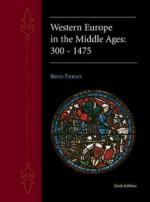|
This section contains 940 words (approx. 4 pages at 300 words per page) |

|
Lighting a Peasant House. Because medieval residences had few windows, peasant homes were often so dark that it took one's eyes a few seconds to adjust when a person entered, even in daylight. Candles were a medieval invention. They could be made of wax from the honeycombs of bees or fashioned from tallow, which was made from sheep fat. Such candles, though, were often beyond the means of the ordinary peasant. When they had artificial lighting at all, most peasants made do with rushlights, which were lengths of rush, a variety of grass, dipped in fat. When lit, they offered little light and more smoke. Sometimes, particularly in southern Europe, peasants also used oil lamps, made according to a technology that went back to the Greeks and Romans. Each of these solutions cost precious resources, however, and many...
|
This section contains 940 words (approx. 4 pages at 300 words per page) |

|




